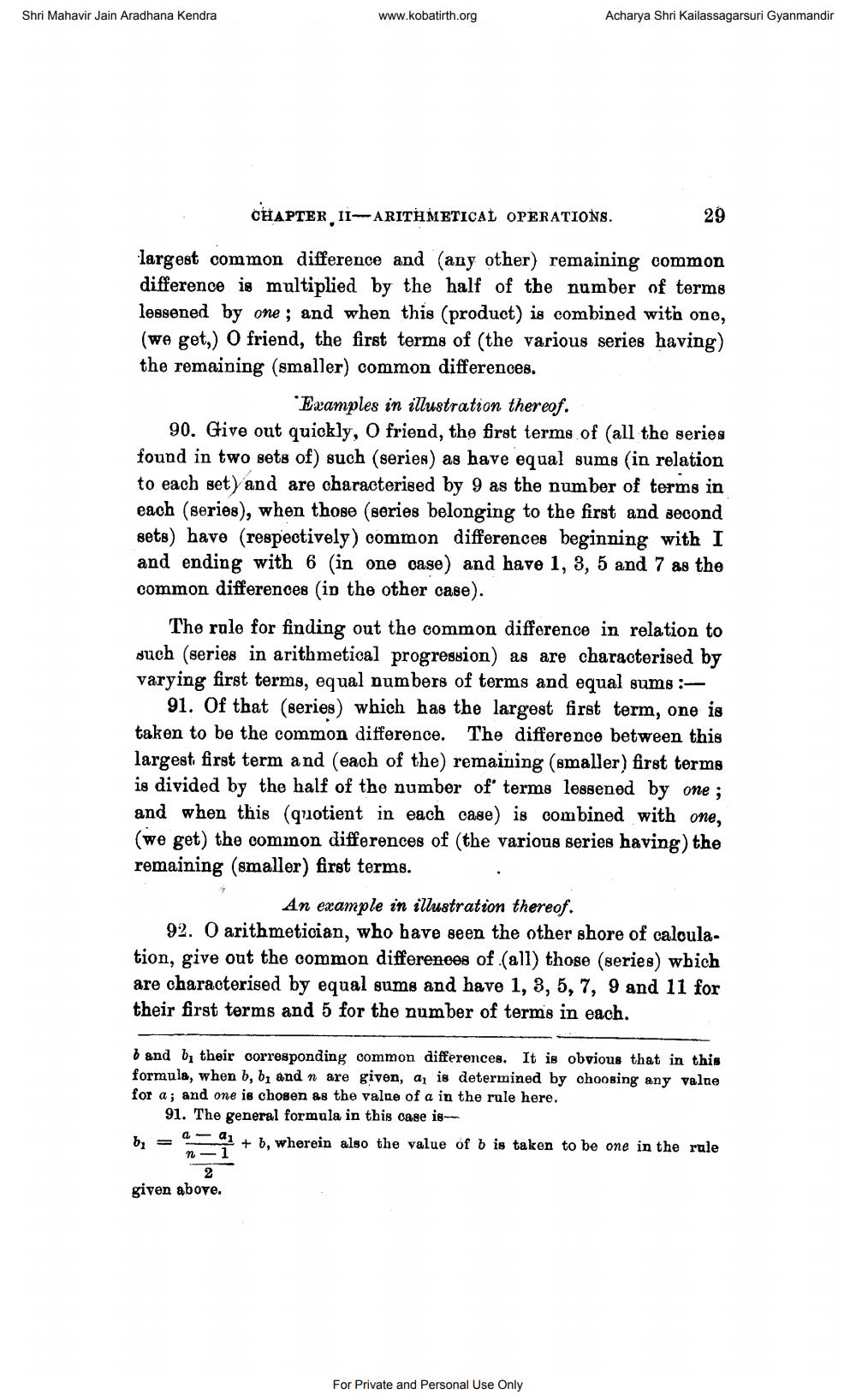________________
Shri Mahavir Jain Aradhana Kendra
www.kobatirth.org
Acharya Shri Kailassagarsuri Gyanmandir
CHAPTER 11--ARITHMETICAL OPERATIONS.
29
largest common difference and any other) remaining common difference is multiplied by the half of the number of terms lessened by one ; and when this (product) is combined with one, (we get,) O friend, the first terms of (the various series having) the remaining (smaller) common differences.
Examples in illustration thereof. 90. Give out quickly, O friend, the first terms of all the series found in two sets of) such (series) as have equal sums (in relation to each set) and are characterised by 9 as the number of terms in each (series), when those (series belonging to the first and second sets) have (respectively) common differences beginning with I and ending with 6 (in one oase) and have 1, 3, 5 and 7 as the common differences in the other case).
The rule for finding out the common difference in relation to such (series in arithmetical progression) as are characterised by varying first terms, equal numbers of terms and equal sums :
91. Of that (series) which has the largest first term, one is taken to be the common difference. The difference between this largest first term and each of the remaining (smaller) first terms is divided by the half of the number of' terms lessened by one ; and when this (quotient in each case) is combined with one (we get the common differences of the various series having) the remaining (smaller) first terms.
An example in illustration thereof. 92. O arithmetician, who have seen the other shore of calculation, give out the common differences of (all) those (series) which are characterised by equal sums and have 1, 3, 5, 7, 9 and 11 for their first terms and 5 for the number of terms in each.
d and by their corresponding common differences. It is obvious that in this formula, when b, b, and n are given, a, is determined by choosing any value for a; and one is chosen as the value of a in the rule here.
91. The general formula in this case is b = 4 41 + b, wherein also the value of b is taken to be one in the role
n - 1 '
given above.
For Private and Personal Use Only




